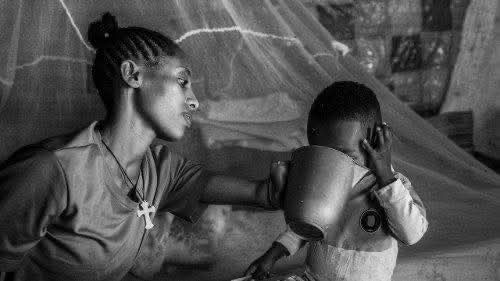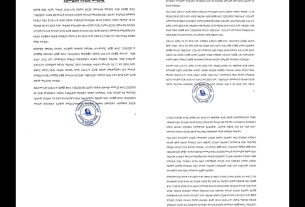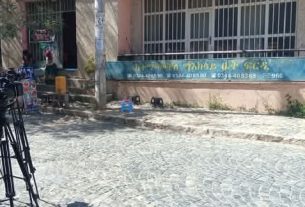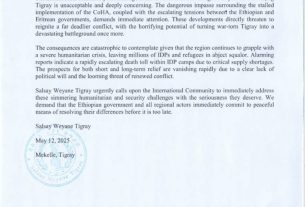Mekelle, Tigray – May 29, 2025
A powerful new photo exhibition in Rome is shining a spotlight on the long-ignored suffering of women in Tigray, as well as the devastating impact of the war on Tigray that has been marked by extreme violence, mass displacement, and systematic sexual atrocities.
Titled “Women’s Bodies as Battlefields”, the exhibition is the work of renowned photojournalist Cinzia Canneri, who was recently awarded the World Press Photo International Award in the Africa – Long-Term Projects category. The exhibition, hosted at the Palazzo delle Esposizioni, runs until June 8 and captures the painful, deeply human stories of Tigrayan and Eritrean women whose lives were torn apart by war.
The war on Tigray, launched in November 2020 by Ethiopian federal forces with the support of allied Eritrean and Amhara militias, has resulted in tens of thousands of deaths, the displacement of millions, and the deliberate destruction of hospitals, schools, and essential infrastructure. Amid this broader humanitarian catastrophe, women in Tigray have borne the brunt of the violence, with rape and sexual slavery used systematically as tools of war.
“Sexual violence is used as a weapon of war—systematically and for political purposes,” said Canneri in an interview with L’Osservatore Romano. “Women’s bodies have literally become battlefields.”
Through haunting imagery and firsthand testimonies, the exhibit documents how Tigrayan women were specifically targeted—many abducted, raped, and brutalized in front of their families. One particularly powerful photo shows women in refugee camps holding scraps of paper on which they wrote the dates and places of their assaults—acts of courage in a climate where such violence is both stigmatized and denied by state institutions.
Canneri shares the story of Zara (a pseudonym), a mother gang-raped by soldiers in her own home. During the assault, her daughter began crying. To silence her, one of the soldiers threw boiling water on the child, disfiguring her abdomen. Zara’s daughter now attends school in Italy, thanks to the Amici di Adwa association. The image of the two—faces covered—symbolizes both the pain and the resilience of Tigrayan women.
Despite the trauma, many women in Tigray continue to resist invisibility. Some have joined the army for protection, while others flee to refugee camps or across borders, often facing further danger.
“Where there is suffering, there is also a profound ability to connect and resist,” Canneri noted. “These women are not just victims—they are witnesses, survivors, and voices for justice.”
The war on Tigray, widely regarded by human rights groups as one of the most underreported and under-acknowledged humanitarian crises in recent history, has failed to receive the level of global outrage seen in other conflicts. Yet the scale of atrocities—including the weaponized use of sexual violence against women—demands international attention, accountability, and healing.
Through her photography, Canneri seeks not only to document suffering but to restore dignity and visibility to those whose pain has been ignored.
“A story of suffering doesn’t always end in a single shot—it can evolve into a new narrative,” she said.




